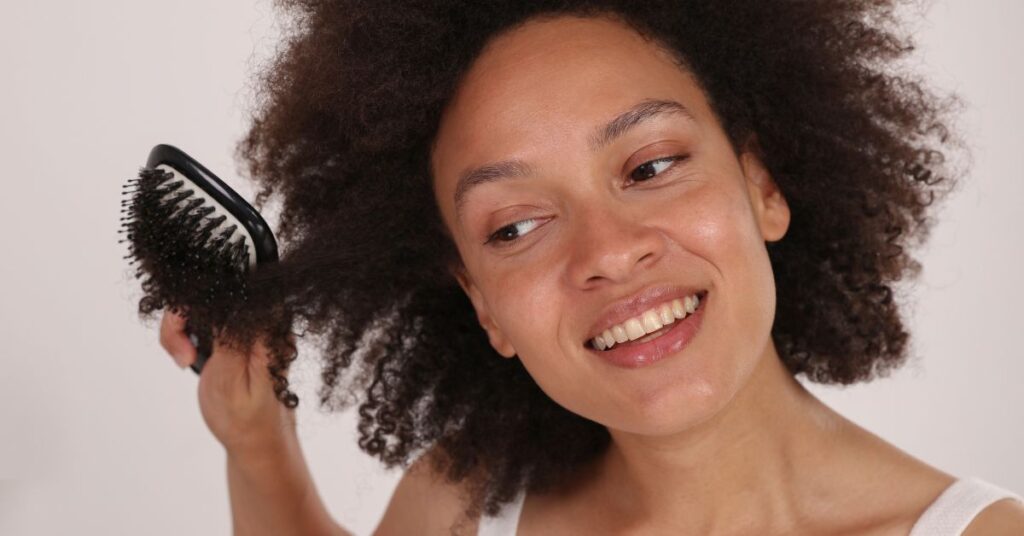
Introduce
Are you considering embracing your natural gray hair but unsure where to start? Transitioning to gray hair can be a liberating journey, symbolizing self-acceptance and embracing authenticity. In this guide, we’ll explore practical tips and expert advice on how to grow out your gray hair with confidence. Whether you’re just beginning to notice silver strands or ready to fully embrace your natural hue, this article will provide you with the tools and insights to navigate the transition smoothly. Join us as we embark on a journey to celebrate the beauty of gray hair and empower you to feel confident in your unique, natural self.
Understanding the Process
Embracing the Transition: Mentality and Acceptance
Transitioning to gray hair is not just a physical change; it’s also a mental and emotional journey. It’s common to feel a range of emotions, from excitement to apprehension, as you contemplate embracing your natural gray. The first step is to adopt a positive mindset and cultivate self-acceptance. Understand that gray hair is a natural part of aging and can be a beautiful expression of your unique identity.
Acceptance doesn’t happen overnight, and it’s okay to take your time adjusting to the idea of going gray. Surround yourself with supportive friends and family who encourage your decision and remind you of your beauty at every stage of life. Remember, your worth is not defined by the color of your hair but by the confidence and authenticity you exude.
The Science Behind Gray Hair Growth: Causes and Factors
Gray hair occurs when the pigment-producing cells in the hair follicles gradually decrease over time, leading to a loss of melanin. While aging is the primary cause of gray hair, other factors such as genetics, stress, and lifestyle choices can also play a role in the timing and extent of graying.
Understanding the science behind gray hair can help demystify the process and empower you to make informed decisions about your hair care routine. Knowing that gray hair is a natural part of the aging process can alleviate concerns and help you embrace the transition with grace.

Planning Your Transition
Setting Realistic Expectations: Timeframe and Growth Patterns
One of the first steps in growing out your gray hair is to set realistic expectations regarding the timeframe and growth patterns. Understand that transitioning to gray is a gradual process that can take months or even years, depending on your hair length and color. Gray hair typically grows in at a rate of about half an inch per month, so it’s important to be patient and allow your hair time to transition naturally.
It’s also essential to consider your hair’s growth patterns and how they may affect the transition process. Some individuals may experience a more uniform distribution of gray hair, while others may notice clusters or patches of gray in specific areas. By understanding your hair’s natural tendencies, you can better plan for how to blend and style your gray hair as it grows out.
Consultation with a Professional: Hairstylist or Trichologist
Before embarking on your gray hair journey, consider scheduling a consultation with a professional hairstylist or trichologist. A hairstylist can assess your current hair color and texture, as well as provide expert advice on how to transition to gray seamlessly. They can recommend tailored techniques for blending your gray hair with your natural color or transitioning to a fully gray look, depending on your preferences.
Transitioning Techniques
Gradual vs. Abrupt: Choosing the Right Approach
When it comes to transitioning to gray hair, one of the first decisions you’ll need to make is whether to take a gradual or abrupt approach. Gradual transitioning involves allowing your natural gray hair to grow in slowly while gradually cutting away the colored or dyed hair over time. This method allows for a more seamless blend between your natural gray and colored hair, minimizing the contrast and making the transition less noticeable.
On the other hand, an abrupt transition involves cutting off the colored or dyed hair all at once, leaving only the natural gray hair behind. This method offers a more dramatic change and can be a bold statement of embracing your natural beauty. However, it may require some adjustment period as you get used to your new look.
The right approach for you will depend on your personal preferences, lifestyle, and comfort level with change. Some people may prefer the gradual approach to ease into their new look, while others may be ready to embrace the change head-on with an abrupt transition. Whichever method you choose, remember that there’s no right or wrong way to go gray—it’s all about what feels right for you.
Camouflaging Methods: Temporary Solutions for Confidence
During the transition phase, you may encounter moments when you want to conceal or camouflage the appearance of gray roots or regrowth. Fortunately, there are several temporary solutions available to help you maintain confidence and style while growing out your gray hair.
Root touch-up products, such as sprays, powders, and touch-up pens, can help conceal gray roots between color appointments and extend the time between salon visits. These products are easy to use and offer quick results, allowing you to touch up your roots on the go.
Hair Care During Transition
Nourishing Your Strands: Proper Shampooing and Conditioning
As you transition to gray hair, it’s essential to prioritize hair care to keep your strands healthy and vibrant. Start by choosing shampoos and conditioners specifically formulated for gray or aging hair, as these products are designed to nourish and enhance the natural beauty of gray strands.
When shampooing, opt for gentle, sulfate-free formulas that won’t strip away natural oils or cause dryness. Massage the shampoo into your scalp using gentle, circular motions, and rinse thoroughly with lukewarm water to prevent buildup and maintain scalp health.
Follow up with a moisturizing conditioner to hydrate and soften your hair, focusing on the mid-lengths and ends where moisture is most needed. Consider using a deep conditioning treatment once a week to replenish lost moisture and improve the overall health and appearance of your hair.
Protecting Against Damage: Heat Styling and Environmental Factors
Gray hair tends to be more susceptible to damage from heat styling and environmental factors, so it’s essential to take precautions to protect your strands during the transition phase. Limit the use of heat styling tools such as flat irons, curling irons, and blow dryers, as excessive heat can cause dryness, breakage, and dullness.
When heat styling is necessary, use a heat protectant spray or serum to create a protective barrier between your hair and the styling tool. Choose low or medium heat settings whenever possible, and avoid applying direct heat to gray roots or regrowth to prevent premature fading or discoloration.
Styling Tips for Gray Hair
Embracing Your Natural Texture: Enhancing Gray Hair’s Unique Qualities
Gray hair often has a distinct texture and pattern that sets it apart from other hair colors. Embrace and enhance your hair’s natural texture by using styling products specifically tailored to gray or aging hair types. Look for lightweight mousses, creams, or serums that provide moisture, definition, and shine without weighing down your strands.
For curly or wavy gray hair, consider embracing your natural curls or waves by using a curl-enhancing product or styling gel. Scrunch your hair gently while it’s damp to encourage curl formation, and allow it to air dry or use a diffuser attachment on low heat to minimize frizz and enhance definition.
If you have straight or fine gray hair, try adding volume and texture with a volumizing mousse or texturizing spray. Apply the product to damp hair, focusing on the roots and mid-lengths, and use a round brush to lift and add body while blow-drying.
Trendy Styles and Cuts: Adapting Your Look to Gray Hair
Gray hair can be incredibly versatile and chic, allowing you to experiment with a wide range of hairstyles and cuts. Whether you prefer short and sassy or long and luxurious, there’s a style to suit every taste and lifestyle.
Consider opting for a shorter haircut, such as a pixie cut, bob, or layered crop, to showcase your gray hair and make a bold statement. Shorter styles can be both stylish and low-maintenance, requiring minimal styling and upkeep while highlighting your natural gray color.
If you prefer longer hair, experiment with layers, bangs, or face-framing highlights to add dimension and movement to your gray locks. Balayage or ombre techniques can also be used to blend gray roots with colored ends for a seamless transition and a modern, lived-in look.

Conclusion
In conclusion, transitioning to gray hair is a journey of self-discovery, empowerment, and celebration. By understanding the process, planning your transition, and embracing practical techniques for care and styling, you can navigate this transformative period with confidence and grace. Remember, going gray is not just about changing your hair color—it’s about embracing your natural beauty, expressing your authenticity, and celebrating the wisdom and experience that come with age. Whether you choose to take a gradual or abrupt approach, experiment with different styles and cuts, or simply let your natural texture shine, the most important thing is to embrace your unique journey and feel confident in your evolving hair color. So, here’s to embracing authenticity, celebrating individuality, and rocking your gray hair with pride. You are beautiful, just as you are.read more
FAQs (Frequently Asked Questions) about Growing Out Your Gray Hair:
1. How long does it take to fully transition to gray hair?
- The timeframe for transitioning to gray hair varies depending on factors such as your hair length, growth rate, and desired outcome. Generally, it can take several months to a few years to fully transition, so patience is key.
2. Will my hair texture change as it turns gray?
- It’s possible for your hair texture to change slightly as it turns gray, as the loss of melanin can affect the hair’s structure. Some individuals may notice a shift in texture or curl pattern, while others may not experience any significant changes.
3. Can I color or dye my hair while transitioning to gray?
- While it’s possible to color or dye your hair during the transition phase, it’s essential to consider the potential impact on your natural gray hair. Frequent coloring can cause damage and may interfere with the transition process. Consult with a professional hairstylist for personalized advice and recommendations.
4. How can I maintain healthy gray hair during the transition?
- To maintain healthy gray hair during the transition, prioritize proper hair care practices such as gentle shampooing, conditioning, and regular trims to prevent split ends. Use products specifically formulated for gray or aging hair to nourish and enhance your strands.
5. Will transitioning to gray hair require a drastic change in my styling routine?
- Transitioning to gray hair may require some adjustments to your styling routine, particularly if you’re accustomed to coloring or treating your hair. However, with the right products and techniques, you can adapt your styling routine to enhance your natural gray hair’s beauty and texture.
6. How can I deal with the demarcation line between my natural gray hair and colored hair?
- The demarcation line between your natural gray hair and colored hair can be managed with gradual blending techniques, such as balayage or foiling, to create a seamless transition. Alternatively, you can opt for an abrupt cut to remove the colored hair altogether and embrace your natural gray.
7. Will embracing gray hair affect my overall style or fashion choices?
- Embracing gray hair doesn’t necessarily require a change in your overall style or fashion choices. Your personal style is a reflection of your personality and preferences, so feel free to experiment with different looks and accessories to complement your natural gray hair.
8. Are there any dietary or lifestyle changes that can promote healthy gray hair growth?
- While there’s no specific diet or lifestyle regimen guaranteed to promote gray hair growth, maintaining a balanced diet rich in vitamins, minerals, and antioxidants can support overall hair health. Additionally, managing stress levels and practicing self-care can contribute to healthy hair growth and overall well-being.
9. How can I address concerns about premature graying?
- Premature graying is a common concern for many individuals, but it’s essential to remember that gray hair is a natural part of the aging process. If you’re experiencing premature graying and are concerned about underlying health issues, consider consulting with a healthcare professional or trichologist for personalized advice and treatment options.
10. What advice do you have for individuals considering embracing their natural gray hair?
- Embracing your natural gray hair is a personal decision that should be based on your own desires and preferences. Take the time to explore different options, seek advice from professionals, and ultimately choose the path that feels right for you. Remember, gray hair is a beautiful and natural expression of who you are, so embrace it with confidence and pride.

